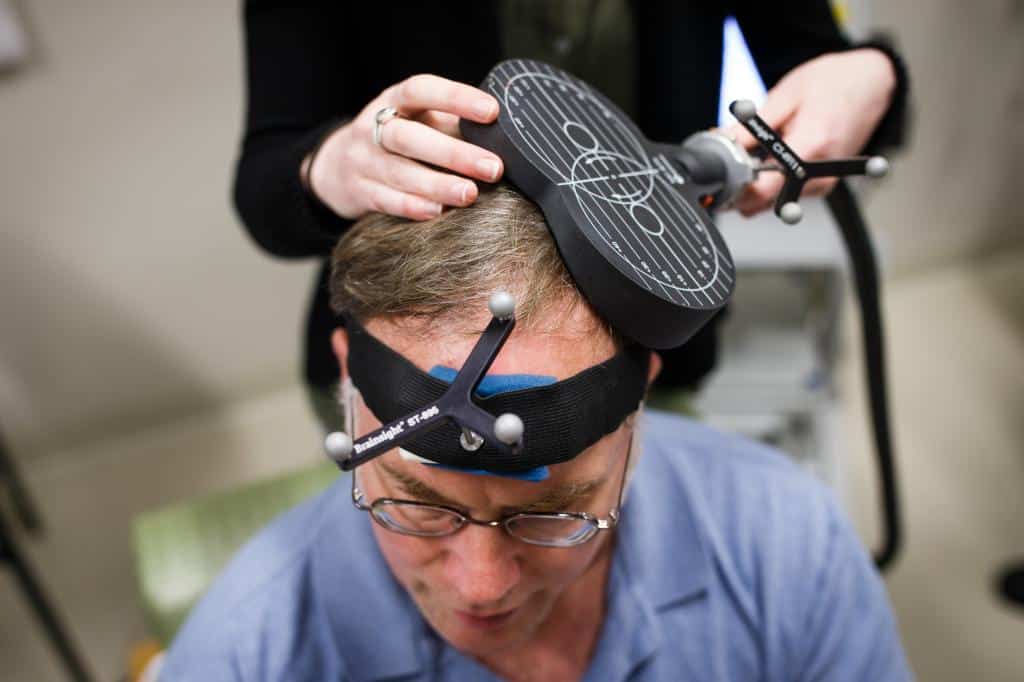Mental health
Using magnets to treat depression sounds like a mad scientist’s plan — but it actually works.
The treatment — known as TMS, or transcranial magnetic stimulation — is backed by years of research and approved by the Food and Drug Administration.
It is a completely non-invasive treatment that delivers magnetic pulses that stimulate neurons in the part of the brain involved in emotion regulation and depression.
And a new study from UCLA Health shows that a certain type of TMS is effective in patients with major depression – after many antidepressants have failed.
UCLA’s therapy, repetitive transcranial magnetic stimulation (rTMS), works so quickly that it can relieve symptoms of depression within days.
“What’s exciting to see is that these patients started reporting improvement within a week of starting treatment,” said Dr. Michael Luchter of the Semel Institute for Neuroscience and Human Behavior. He said in a news release.
Some insurance plans even cover the procedure.
What is TMS?
TMS is a therapy that uses magnetic coils or paddles to create strong magnetic fields that alter the electrical activity in the brain.
The procedure was first developed in 1985 and is now used for a variety of mental health and brain-related conditions. According to the Cleveland Clinic.
Depending on the type of treatment, the magnetic coil can be placed directly on the head, or the patient can wear a type of helmet with a magnetic coil attached to it.
It is not entirely clear to medical researchers how TMS works, but it is believed to stimulate brain regions that have decreased activity during depression. According to the Mayo Clinic.
The procedure is non-invasive and does not involve any surgery, injections or anesthesia. It is also generally painless except for some discomfort from wearing the magnetic wire and the clicking sound the magnetic coil makes.
TMS for depression
The FDA approved the use of TMS in 2008 to treat major depression. The therapy is generally used after other treatments, such as antidepressants, have failed to relieve symptoms of depression.
In addition to depression, the FDA has approved the use of TMS to treat obsessive compulsive disorder (OCD) and migraines, and for smoking cessation.
Beyond these health concerns, TMS has been used to treat drug and alcohol addiction, Alzheimer’s disease, eating disorders, Parkinson’s disease, post-traumatic stress disorder (PTSD), schizophrenia, and stroke.
In the year In 2016, Michelle Pagano, a Connecticut resident, told the Post that she was “too much” to laugh for the first time in months after receiving TMS treatment for depression.
“In less than six months, I was able to reorganize myself [after] “She lived with depression, anxiety and grief for more than 20 years,” Pagano said, adding that she had “more debt than I could ever pay” from the procedure.
rTMS therapy
For the new study, researchers at the UCLA Semel Institute reviewed the outcomes of hundreds of patients treated with rTMS therapy at UCLA Health from 2009 to 2022.
Most rTMS patients received 20- to 30-minute therapy sessions five days a week for six to eight weeks.
The result of the study, It was published this week in Psychiatric Research54% of patients experienced at least 50% improvement in depression symptoms.
“We have a unique approach to rTMS treatment at UCLA. In our ‘exact TMS’ model, patients see a psychiatrist at each treatment and we measure symptoms weekly,” said study leader Luchter.
Early improvement reported within five or 10 treatments predicts how well a patient will respond during treatment.
Leuchter said this would help doctors decide whether or not to change their approach for each patient.
Click more…
{{#is display}}
{{/isDisplay}}{{#isAniviewVideo}}
{{/isAniviewVideo}}{{#isSRVideo}}
{{/isSRVideo}}
